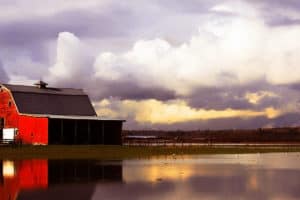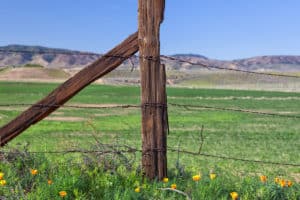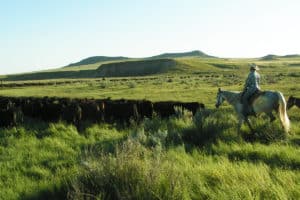No buffalo roamed on Hawthorne Street in Pittsburgh where I grew up. Punching a time clock was more in my future than punching a cow.
Chuck Wagon was the name we called a too-big kid over on the next block. Today, we might call him Salad Bar, but that really doesn’t convey the intended schoolyard meanness of the original.
I was not, like President Bush, born with a silver burr under my saddle.
Nonetheless, for the majority of my adult life, I’ve grazed beef cattle — about 1,500 altogether — on a Virginia mountain farm.
So how did that happen?
Twenty-five years ago I bought a country place that had fenced pasture. I was pretty sure that something in addition to mortgage debt went in there.
Almost half of America’s two million farms run cattle, about 100 million head in recent years. It is America’s largest agricultural sector and provides us with about 28 billion pounds of meat at an average of $4.16 per pound in 2007.
If you buy open land in the country and certainly a farm, you’re likely to discover your inner cowperson even if you didn’t realize you were looking for it.
Every greenhorn buyer should know a few things about the cattle business.
Requirements. Cattle need food, water and occasional shots—roughly the same things I provided male teenagers courting my daughter. It’s not for nothing that Molly announced that I was “the worst Daddy in the ninth grade.”
Cattle also need fences. States approach fence law in different ways, but assume that you are responsible for half the boundary fence line. Certain neighbors will be eager to point out that all the bad sections of common fence are yours. In some states, you and your neighbors are jointly responsible for all fence. Ask your seller how fence responsibility has been apportioned before you make an offer.
Cattle do better on grass than trees, dirt or rock. Your pre-offer research should include walking the land with a knowledgeable person–the local cooperative extension agent, agricultural consultant or just an experienced friend — to determine forage quality. Check for invasive weeds and poisonous plants. Then estimate conservatively the land’s carrying capacity, which can range from one animal per acre to one per 100.
Consider rotational grazing. Instead of grazing one 100-acre field continuously, fence it into ten ten-acre lots and run the whole herd into each paddock for a few days each. Management-intensive grazing allows you to increase your number of head per acre, which means more total pounds of gain produced per year. Both cattle and pasture are healthier.
Rotational grazing requires interior fencing, water in each paddock and a cowperson to open and close gates.
Water. Grazing operations need two kinds: rain to grow grass, and water for cattle to drink. Irrigation water may be necessary as well for the production of winter hay in arid areas. Farm buyers might consider avoiding chronic water-short areas, dry rangeland and perhaps the drought-plagued parts of the Southeast.
Act locally. Cattle can degrade their environment. Four-hoofed traffic compacts ground and causes erosion. Where their number exceeds available forage, overgrazing produces harmful effects. I know steep hillsides that have been left permanently bare and eroded from overgrazing. Cattle foul streams—but not on purpose.
Overgrazing has been an especially difficult problem on western rangeland that ranchers lease from public agencies. The case to eliminate livestock grazing on arid public land is made in Debra L. Donahue’s, The Western Range Revisited: Removing Livestock from Public Lands to Conserve Native Biodiversity, University of Oklahoma Press, 1999. Ranchers tend to hold an opposite view.
Cattle grazing need not harm pasture and water resources, but protection requires fencing them out of certain areas and other measures. My best guess is that farmers will eventually be required to fence livestock away from flowing surface waters to protect downstream water quality.
Care. Cattle require attention, even if you’re just grazing stocker steers from spring to fall. You will need handling facilities, including a head catch, and an array of needles, bolus guns, applicators, bull tongs (a nose pliers), nippers, knives and medications.
Cattle do not like to be poked, prodded and punched full of medicinal holes. They complain and are not above evening the score if you give them a chance. I once had to use a needle to inject medication into the eyelids of ten steers for five consecutive days to prevent them from going blind with pinkeye. My wife, an animal-friendly person, stood next to me, helpfully shouting into my ear: “Don’t hurt them!” A good time was not had by all.
Cow-calf operations breed cows, and either a bull or a bull-substitute does the breeding. Sex and babies always complicate matters.
First-time cattle farmers should stick with steers and avoid the issues raised by arranging unprotected teen sex with older guys. Steers, incidentally, are bulls lite.
Here is a thumbnail personality guide to beef cattle. Cows are always female. They tend to be suspicious and, with calves, fairly hostile. Heifers, though virgins, are sluts. Steers can be goofballs. Old bulls are unpredictable, and young bulls are idiots.
The cattle business. Newcomers should know three things.
First, cattle farming is one of our few agricultural sectors that has not been federally subsidized, at least directly. Uncle Sam will not pay you to not raise cattle. No floor is put under sale prices, and no supplement is added to whatever you receive in a cattle sale.
Second, like all farms, the majority of cattle operations probably lose money. In the 2002 Census of Agriculture, 994,000 of America’s then total of 2.13 million farms reported a net gain, averaging about $19,000, while 1.13 million farms, about 53 percent, reported a net loss, averaging about $14,000. Profit and loss for cattle farms specifically is not available.
Finally, the IRS allows farm businesses to deduct expenses and depreciate equipment and improvements. Losses from farming can be taken against non-farm income. Losses from hobby and lifestyle farms cannot. Certain taxpayers with high off-the-farm income are not unfamiliar with these distinctions.
Cattle and horses are two common farm ventures for small farmers and those new to farming.
It’s hard to make much money from cattle when you’re trying to, but it’s pretty easy to show a loss if you’re trying to do that.
Many state cooperative extension services will work up a financial profit/loss projection using the particulars you provide. Contact the beef-cattle specialist at a land-grant university in your state.
Information about the cattle industry can be found at the USDA’s National Agricultural Statistical Service at www.nass.usda.gov and Economic Research Service at www.ers.usda.gov.
The cattle industry has been criticized for two decades over its grazing practices, environmental impacts, winter-feed constituents (such as chicken litter), slaughter-house procedures and product safety. I agree with much of the criticism. We can and should do better.
Still, if you decide to graze cattle, know that you are doing something useful.
Over the years, I have produced one four-pound book on farming and country real estate and about 300,000 pounds of grass-fed meat. I’m sure I’ve benefited society more as a grass farmer than as a writer, certainly on pound-of-product-produced basis.
Perhaps the Farm Bill now in Congress will include a new provision that will pay writers like me to stop writing columns like this. Unfortunately, that subsidy would be taxable income. Maybe Congress can give writers a loss they can use against other income. It is a Farm Bill, after all.
This content may not be used or reproduced in any manner whatsoever, in part or in whole, without written permission of LANDTHINK. Use of this content without permission is a violation of federal copyright law. The articles, posts, comments, opinions and information provided by LANDTHINK are for informational and research purposes only and DOES NOT substitute or coincide with the advice of an attorney, accountant, real estate broker or any other licensed real estate professional. LANDTHINK strongly advises visitors and readers to seek their own professional guidance and advice related to buying, investing in or selling real estate.









Add Comment